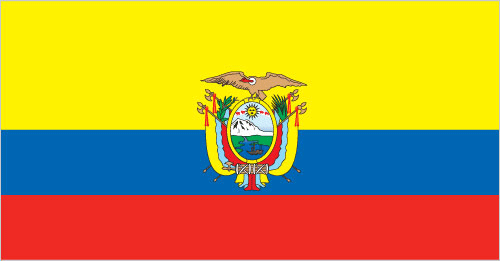
Ecuador is substantially dependent on its petroleum resources, which have accounted for more than half of the country's export earnings and approximately two-fifths of public sector revenues in recent years. In 1999/2000, Ecuador's economy suffered from a banking crisis, with GDP contracting by 5.3% and poverty increasing significantly. In March 2000, the Congress approved a series of structural reforms that also provided for the adoption of the US dollar as legal tender. Dollarization stabilized the economy, and positive growth returned in the years that followed, helped by high oil prices, remittances, and increased non-traditional exports. From 2002-06 the economy grew an average of 4.3% per year, the highest five-year average in 25 years. After moderate growth in 2007, the economy reached a growth rate of 6.4% in 2008, buoyed by high global petroleum prices and increased public sector investment. President Rafael CORREA Delgado, who took office in January 2007, defaulted in December 2008 on Ecuador's sovereign debt, which, with a total face value of approximately US$3.2 billion, represented about 30% of Ecuador's public external debt. In May 2009, Ecuador bought back 91% of its "defaulted" bonds via an international reverse auction. Economic policies under the CORREA administration - for example, an announcement in late 2009 of its intention to terminate 13 bilateral investment treaties, including one with the United States - have generated economic uncertainty and discouraged private investment. China has become Ecuador's largest foreign lender since Quito defaulted in 2008, allowing the government to maintain a high rate of social spending; Ecuador contracted with the Chinese government for more than $9.9 billion in forward oil sales, project financing, and budget support loans as of December 2013. Foreign investment levels in Ecuador continue to be the lowest in the region as a result of an unstable regulatory environment, weak rule of law, and the crowding-out effect of public investments. In 2013, oil output marginally reversed a declining trend and production is expected to increase slightly in 2014, although prices will likely remain lower than in previous years. Faced with a 2013 trade deficit of $1.1 billion, Ecuador erected technical barriers to trade in December 2013, causing tensions with its largest trading partners. Ecuador also decriminalized intellectual property rights violations in February 2014.
$157.6 billion (2013 est.)
country comparison to the world: 62
$151.5 billion (2012 est.)
$144.2 billion (2011 est.)
4% (2013 est.)
country comparison to the world: 79
5.1% (2012 est.)
7.8% (2011 est.)
$10,600 (2013 est.)
country comparison to the world: 116
$9,600 (2012 est.)
$9,200 (2011 est.)
agriculture: 5.9%
industry: 35.1%
services: 59% (2013 est.)
25.6% (December 2013 est)
2.6% (2013 est.)
country comparison to the world: 99
4.5% (2011 est.)
6.953 million (2013 est.)
country comparison to the world: 64
agriculture: 27.8%
industry: 17.8%
services: 54.4% (2012)
4.2% (2013 est.)
country comparison to the world: 38 4.2% (2011 est.)
petroleum, food processing, textiles, wood products, chemicals
3.1%
country comparison to the world: 94
note: excludes oil refining (2013 est.)